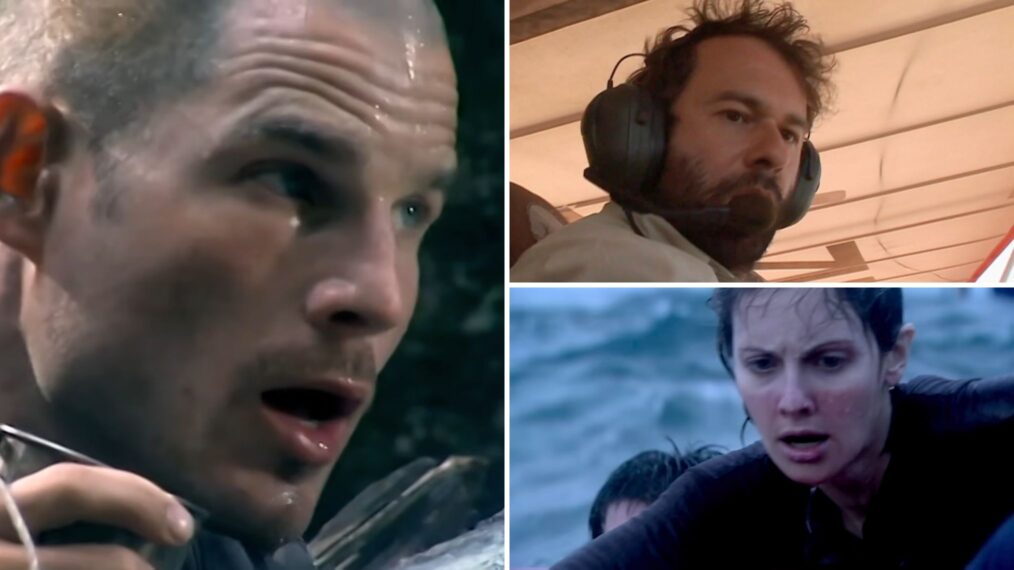‘I Shouldn’t Be Alive’ Turns 20: Revisit These Shocking Sagas From the Series

Twenty years ago, on October 28, 2005, Discovery Channel debuted a TV program with an attention-getting title: I Shouldn’t Be Alive. The docuseries presented true survival tales, with the real-life subjects recounting their improbable tales as reenactments depicted their sagas.
I Shouldn’t Be Alive came from producer John Smithson, who previously used the same format for the 2003 survival documentary Touching the Void. “The combination of first-person testimony and high-quality dramatization seemed to touch a nerve with the viewing public,” Smithson told Cinema.com. “They are mesmerized by these great, real-life stories of ordinary people who find themselves in nightmarish predicaments, and whose lives depend on crucial life-or-death decisions.”
Below, relive some of the wildest stories from I Shouldn’t Be Alive and see the survivors tell the story of their survival in their own words.
Stranded in shark-infested waters
In 1982, Deborah Scaling Kiley, Brad Cavanaugh, and three other people embarked on a sailing trip from Maine to Florida, but a storm soon sunk their vessel, stranding the party on a life dinghy. Over the next five days, two men drank salt water out of desperation and experienced hallucinations that made them jump into the water, where they were eaten by sharks. The other woman died of leg injuries sustained in the sinking. A passing freighter finally rescued Kiley and Cavanaugh, the only survivors, and they recounted the story in I Shouldn’t Be Alive’s series premiere.
Injured and stalked by lions
Greg Rasmussen was tracking poachers in Zimbabwe in 2003 when his micro-light airplane stalled and crashed down to the bush below. His legs were crushed from the pelvis down, so he dragged himself out of the wreckage with his arms. With lions circling and dehydration setting in, Rasmussen survived for 28 hours in the wilderness. He finally flagged down rescuers by using a shard of broken glass to reflect sunlight, and after hospitalization and rehabilitation, he eventually regained use of his legs.
Pinned under a one-ton boulder
In 1997, Warren Macdonald was scaling Australia’s Mount Bowen when a one-ton boulder came loose and pinned him to a creek bed. Geert van Keulen, a fellow climber, then trekked a day and a half to find help, and even then, van Keulen had to wait for a ferry to come so that he could radio for help — and then wait for a Queensland rescue helicopter to arrive on the scene. Macdonald was trapped for more than 40 hours, and he had to have both legs amputated.
Crashed in a volcano
A Hollywood crew was shooting footage for the film Sliver in 1992 when their helicopter lost power over Hawaii’s Puʻu ʻŌʻō volcanic crater. Pilot Craig Hosking managed to set the aircraft down in such a way that he and camera operators Mike Benson and Chris Duddy only suffered minor injuries, but the trio had to contend with noxious volcanic gasses, including sulfur dioxide, carbon dioxide, and hydrogen sulfide. Another helicopter crew rescued Hosking the same day, Duddy clambered the crater wall to safety the following day, and Benson was rescued via helicopter a day after that.
Rescued by her dog
Professional endurance athlete Danelle Ballengee was on a routine training run with her dog Taz in Moab, Utah, in 2006 when she slipped on black ice and fell 60 feet into a canyon. With a shattered pelvis, she dragged herself a quarter mile and then survived freezing temperatures for two nights before, in a moment of desperation, telling Taz to go find help. Taz managed to find a search and rescue team to rescue Ballengee, and she was airlifted to a hospital en route to a full recovery.
Surviving one crash after another
Pilot Justin Kirkbride experienced a loss of control while operating a single-engine Cessna plane on a 2002 sightseeing flight over Colorado’s mountains, so he crash-landed the aircraft in a patch of trees. After tending to his two passengers, both of whom had injuries, Kirkbride journeyed 10 miles through deep snow and found help at the Kirtland Air Force Base. Kirkbride boarded one of two Air Force helicopters involved in the search, but by happenstance, that helicopter crashed, too. Luckily, no one in the helicopter was injured, and Kirkbirde and his passengers lived to tell the tale.
Lost at sea in the Perfect Storm
In the same 1991 nor’easter covered in the book and the film The Perfect Storm, a National Guard helicopter ran out of fuel and ditched in the storm-tossed Atlantic Ocean off the shores of Long Island. Three men leapt into the ocean, where waves towered up to 100 feet, and two other men went down with the chopper. After hours lost at sea, four men were rescued, while the fifth was never found. The survivors recounted their ordeal in the I Shouldn’t Be Alive series finale.






